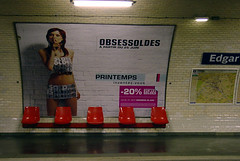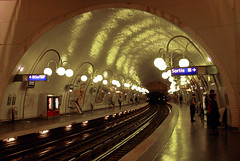TransportGooru Headline News Aggregator Dispatch – March 31, 2009
LA Transportation Blog – Headlines for Tuesday March 31, 2009
Streetsblog – Headlines for Tuesday March 31, 2009
- Albany Attempting to Fund Transit and Avoid Bridge Tolls (NYT, Post)
- Obama Admin Takes Firmer Approach With GM and Chrysler (NYT, NYT, WSJ, Yglesias)
- Brooklyn Bridge Face-Lift Headlines List of NYC Stim Projects (News, Post)
- Pols ‘Protest’ MTA Doomsday Measures at City Hall (Bklyn Eagle)
- Without Rescue Package MTA Would Cut 3,000 Positions (News)
- Rental Housing on the Rise in the Exurbs (WSJ)
- How Much High-Speed Rail Does $8 Billion Buy? (MSNBC)
- CA Bill Would Set the Stage for Mileage Tax (Streetsblog SF)
- WashCycle Wades Into the Bike PR Debate
- Albuquerque Getting a Bike Bridge Across Rio Grande (Bike ABQ via Streetsblog.net)
Transport for America – Headlines for Tuesday March 31, 2009
- Road work in Baltimore will bring some serious congestion downtown. (Baltimore Sun)
- Colorado’s stimulus-funded roadwork appears to avoid any serious sprawl. (Colorado Independent)
- The dismal economy pushes road builders to offer some extraordinarily low bids. (New York Times)
- As dreams of homeownership slip away for millions, renting moves to the mainstream in far-flung suburbs. (Wall Street Journal)
Note: TransportGooru thanks all the authors for contributing to this headline news summary. This dispatch is made possible by integrating the headline news feeds from the above mentioned sources. At times, you may encounter a repeat of the same headline news since they are captured by various individuals working at different organizations. Please visit the respective source websites if you have any trouble viewing the articles behind the URLs.


 The
The 



